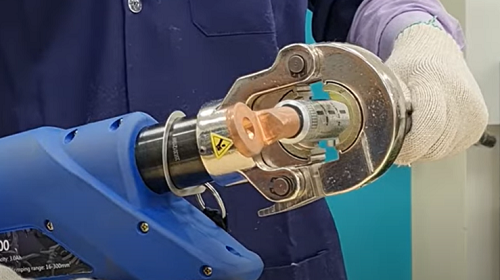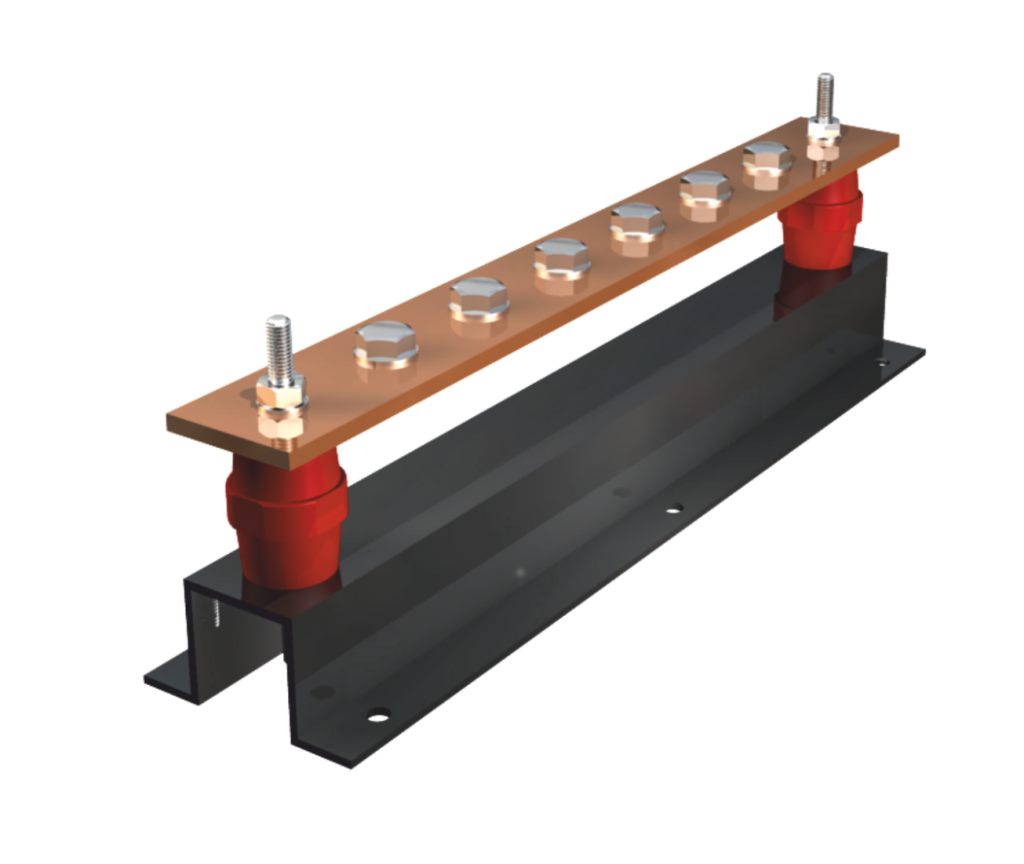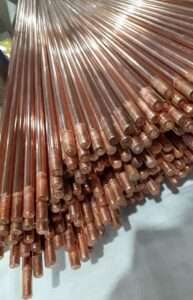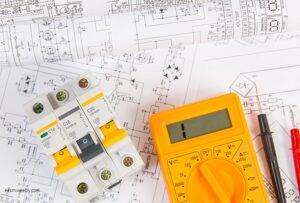In this blog we will understand how to terminate a cable lug into an Earth bar, by the end of this blog you will understand the factors determining and methods utilised in the process.
This blog serves as an in-depth guide on cable lug termination onto earth bars, crucial for electrical installations. It examines key factors affecting cable lug size choice, including conductor size, current capacity, material, environmental conditions, and installation needs. Detailed methods and tools for cable and lug preparation are outlined, focusing on achieving optimal conductivity and safety. The guide also describes the termination process step by step, from preparation to crimping, inspection, and testing. It emphasizes assessing earth bar suitability based on electrical needs, material, size, environment, and compliance. Lastly, it underscores the importance of adhering to industry standards and regulations to ensure safety and efficiency in electrical systems.
Factors determining the size of your Cable Lug

The appropriate cable lug size for termination onto an earth bar depends on several key factors:
- Conductor Size: Matching the cable lug size to the conductor size is crucial for a proper fit. The lug should accommodate the cross-sectional area of the conductor to ensure a secure connection without damaging the cable.
- Current Carrying Capacity: The cable lug size should align with the maximum current the system is expected to carry. Ensuring that the lug can handle the current without overheating or causing voltage drops is essential for safety and efficiency.
- Material and Construction: Consideration of the material composition and construction of the cable lug is important. Factors such as conductivity, corrosion resistance, and mechanical strength influence the choice of lug size for a reliable termination.
- Environmental Conditions: Environmental factors, including temperature variations, moisture, and exposure to chemicals or corrosive elements, should be considered to select a cable lug size that can withstand these conditions over time.
- Installation Requirements: The lug size should align with the installation method and space available for termination on the earth bar, considering factors like insulation, clearance, and accessibility for proper installation.
By considering these factors collectively, engineers can determine the appropriate cable lug size for a secure and efficient termination onto an earth bar within an electrical system.
Methods for preparation of your Cable & Lug
Preparing the cable and lug before termination is crucial for ensuring optimal electrical conductivity. Here are specific methods and tools recommended for this process:

- Stripping and Trimming: Use cable strippers or appropriate tools to carefully strip the cable insulation to the recommended length. Trimming the conductor to the specified dimensions ensures a clean and proper fit within the cable lug.
- Cleaning: Prior to termination, clean the exposed conductor and the inner surface of the lug thoroughly to remove any contaminants, oxidation, or debris. Use approved cleaning solutions or solvents and ensure the surfaces are dry before proceeding.
- Surface Abrasion: Employ abrasive materials or tools to lightly abrade the conductor’s surface. This process, known as ‘scrubbing,’ removes surface oxidation or coatings, enhancing the conductivity between the conductor and the lug.
- Applying Anti-Oxidants: Apply specialized anti-oxidant compounds or pastes onto the cleaned conductor surface before insertion into the lug. These compounds protect against oxidation and promote better electrical contact.
- Crimping or Soldering: Depending on the termination method, use appropriate crimping tools or soldering equipment to affix the cable lug securely onto the prepared conductor. Ensure that crimps or solder joints are uniform and meet specified standards.
- Heat Shrink Tubing or Insulation: After termination, apply heat shrink tubing or insulation to protect the connection from environmental factors, moisture, and physical damage. This ensures the longevity and reliability of the termination.
- Inspection: Perform a visual inspection and, if applicable, use specialized testing equipment to verify the quality of the termination. Check for proper alignment, secure attachment, and absence of defects that might compromise conductivity.
By following these recommended methods and utilizing appropriate tools, engineers can ensure that the cable and lug are optimally prepared for termination, resulting in reliable and efficient electrical conductivity within the system.
Talk to our engineers!
Termination process of Cable Lug onto an Earth Bar

Terminating a cable lug onto an earth bar involves several precise steps to ensure a reliable and efficient electrical connection.
Steps for Termination:
Step 1: Prepare the Cable
- Strip the cable insulation to the specified length using appropriate stripping tools.
- Clean the exposed conductor thoroughly using a solvent and brush to remove any contaminants or oxidation.
- If required, apply an anti-oxidant compound to the cleaned conductor surface.
Step 2: Prepare the Lug
- Select a cable lug suitable for the conductor size and type.
- Clean the inner surface of the lug to ensure it’s free from dirt, grease, or contaminants.
Step 3: Insert the Conductor into the Lug
- Insert the prepared conductor into the lug, ensuring it fits properly without any frayed strands.
- Ensure the conductor is fully seated within the lug.
Step 4: Crimp the Connection
- Use a suitable crimping tool matched to the lug and conductor size.
- Follow the manufacturer’s instructions to crimp the lug onto the conductor. Apply sufficient pressure to create a secure mechanical connection without deforming the lug or conductor.
Step 5: Prepare the Earth Bar
- Select an appropriate terminal on the earth bar for the termination.
- Ensure the terminal is clean and free from contaminants or oxidation.
Step 6: Secure the Lug to the Earth Bar
- Place the lug onto the selected terminal of the earth bar.
- Use a calibrated torque wrench to tighten the lug onto the earth bar terminal to the specified torque value. Ensure the torque is evenly applied for a secure connection without over-tightening.
Step 7: Inspection and Testing
- Visually inspect the termination to ensure proper alignment, secure attachment, and absence of defects.
- Perform electrical testing or continuity checks to verify the integrity of the connection.
Step 8: Finalize and Insulate:
- Once the termination passes inspection and testing, finalize the installation by applying suitable insulation or protective covers to the termination area to prevent environmental damage or accidental contact.
- Always refer to manufacturer guidelines, industry standards, and safety regulations specific to your application when terminating cable lugs onto an earth bar to ensure compliance and a reliable electrical connection.
Assessing Earth Bar Placement
Assessing the suitability of an earth bar for a specific application involves considering various factors to ensure its effectiveness within the electrical system:
- Electrical Requirements: Determine the maximum fault current the earth bar needs to handle. This involves understanding the system’s fault levels and ensuring the earth bar’s capacity aligns with these requirements.
- Material and Construction: Consider the earth bar’s material composition and construction. Factors such as conductivity, corrosion resistance, mechanical strength, and durability are critical for selecting an earth bar suitable for the application and environment.
- Size and Configuration: Choose an earth bar size that accommodates the number of connections required for the application. Consider the bar’s shape and the spacing between terminals to ensure adequate clearance and accessibility for cable lug terminations.
- Environmental Conditions: Evaluate the environment where the earth bar will be installed. Consider factors such as temperature fluctuations, moisture levels, chemical exposure, and potential mechanical stress to select an earth bar capable of withstanding these conditions without degradation.
- Regulatory Compliance: Ensure that the selected earth bar meets relevant industry standards, codes, and regulations. Compliance with standards ensures the earth bar’s performance and safety within the specific application.
- Placement and Location: Place the earth bar strategically within the electrical system to ensure its effectiveness. Consider proximity to equipment requiring grounding, accessibility for maintenance, and minimizing the length of grounding conductors to reduce impedance.
- Bonding and Interconnections: Assess the need for bonding between multiple earth bars or interconnection with other grounding systems within the facility. Proper bonding ensures equipotential grounding and minimizes voltage differentials.
- Installation and Maintenance Accessibility: Ensure the earth bar’s placement allows for easy installation and maintenance. Accessibility for cable terminations, inspections, and testing is crucial for ongoing reliability and safety.
By considering these essential factors, engineers can assess the suitability of an earth bar for a specific application, ensuring it meets the electrical system’s requirements, environmental conditions, and safety standards while allowing for efficient grounding and fault protection.
Industry Standards and Compliance

Several industry standards and regulations govern the termination process of cable lugs onto an earth bar, ensuring safety and efficiency in electrical systems. Some notable standards include:
- IEEE (Institute of Electrical and Electronics Engineers) Standards: IEEE 837 specifies practices for grounding and bonding in utility substations, covering the selection, installation, and maintenance of grounding systems, including terminations onto earth bars.
- IEC (International Electrotechnical Commission) Standards: IEC 62561 series outlines requirements for lightning protection system components, including earth terminations, defining proper installation, materials, and testing methods.
Compliance with these standards ensures safety and efficiency in multiple ways:
- Safety: Adhering to standards minimizes the risk of electrical hazards such as electrical shocks, fires, or equipment damage. Proper terminations onto earth bars help dissipate fault currents safely, preventing dangerous build-up of electricity.
- Reliability: Standards specify best practices for terminations, ensuring reliable electrical connections that minimize resistance, voltage drops, and potential failures due to poor contact or corrosion.
- Compatibility: Following industry standards ensures compatibility across different systems and components, enabling interoperability and consistent performance in diverse electrical installations.
- Legal Compliance: Compliance with these standards is often a legal requirement in many jurisdictions, ensuring that installations meet regulatory guidelines and reducing liability risks.
- By adhering to these industry standards and regulations governing the termination process of cable lugs onto earth bars, engineers and installers ensure safe, reliable, and efficient electrical systems that meet established safety and performance criteria.
Conclusion
This technical blog provides an in-depth analysis of earth rod systems, focusing on selecting the correct cable lug size for earth bar termination. It highlights key considerations such as conductor size, current capacity, material characteristics, environmental impact, and installation prerequisites. The article offers detailed guidance on cable and lug preparation, encompassing steps like stripping, cleaning, abrasion, and crimping, to ensure optimal electrical conductivity. It also presents a thorough procedure for cable lug termination, including preparation, inspection, and testing phases. Additionally, the blog evaluates earth bar suitability for various applications and underscores the importance of adhering to industry standards like IEEE and IEC to guarantee safety and efficiency in electrical systems.
Thank you for reading the blog, Axis is a leading manufacturer and supplier of Electrical Components to over 80+ Countries. Talk to our industry expert by visiting our Contact Us section. You can also watch our videos by our experts – click here.







